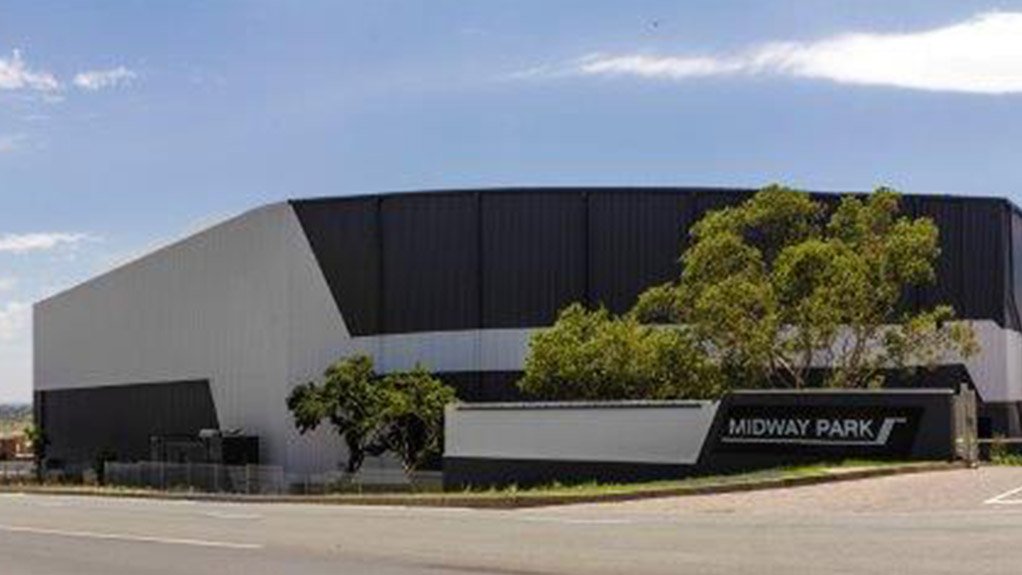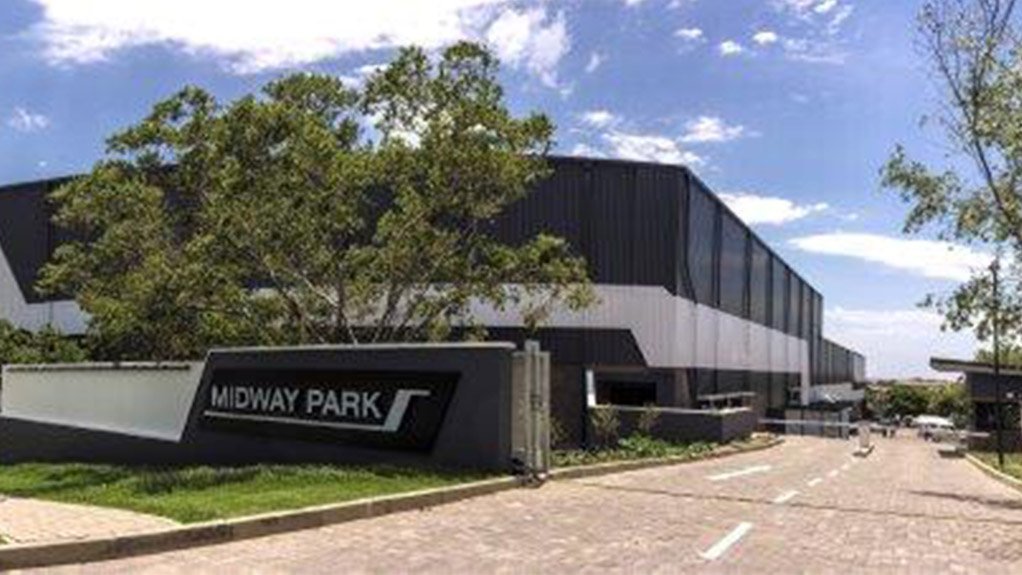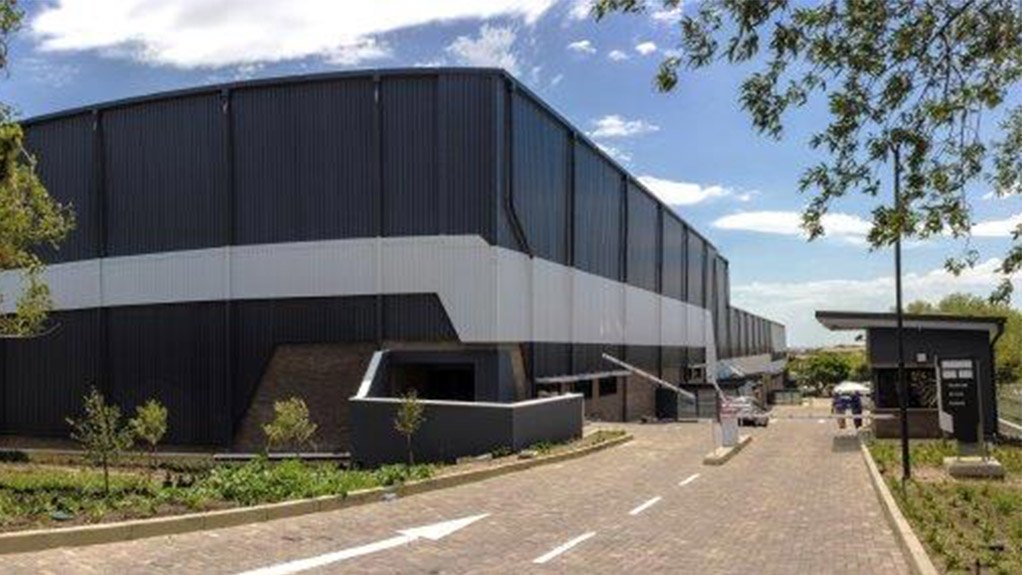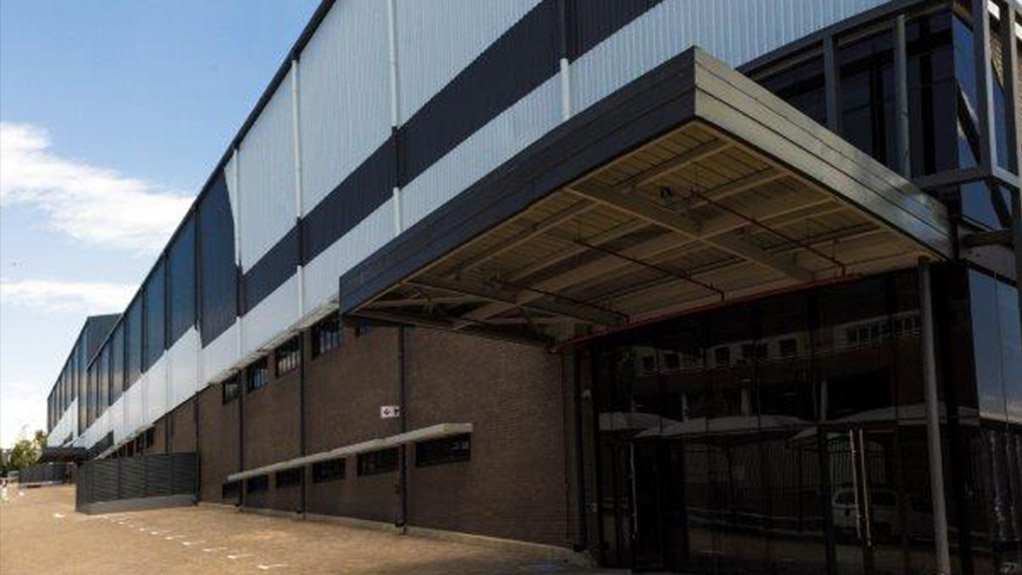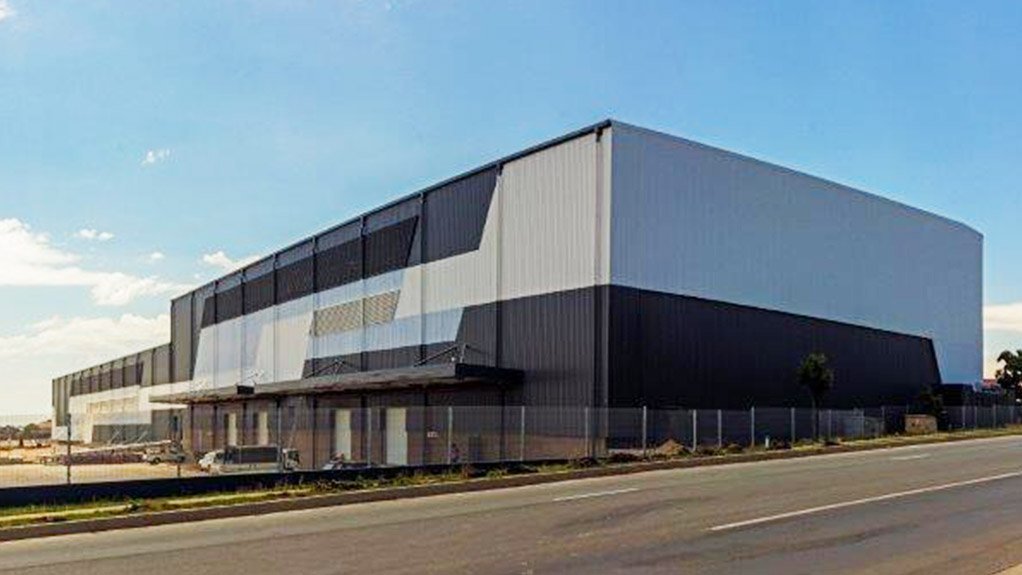Midway Industrial Park raises the benchmark for warehouse projects
This article has been supplied as a media statement and is not written by Creamer Media. It may be available only for a limited time on this website.
Architecture and interior architecture company Paragon has raised the benchmark for warehouse buildings due to its involvement with the Midway Industrial Park in Samrand, which sets a new standard for the functional flexibility and aesthetics of industrial buildings.
Well-known for its landmark Sandton projects such as Sasol Place, the Discovery Campus, and the Alice Lane Precinct, Paragon Senior Project Architect Christiaan Liebenberg points out that Midway Industrial Park is equally iconic. Directly adjacent to the N1 highway, within the busy Samrand precinct, it is a site that not only slopes and exposes towards the highway, but also slopes towards the south, opening up very good views toward the building.
The unique design lines, feature compositions, striking colour contrasts, relief cladding surfaces, and varied surface textures make it stand out substantially in comparison to most industrial and warehouse buildings. “The idea was to purposely fragment the façade into strong design elements that not only unify the building, but also intentionally integrate services and minimise its visual mass,” Liebenberg elaborates.
The main aim was to maximise usage on the property for both warehouse space and delivery and dispatch facilities. Maximising the usable space internally and externally provides the most flexibility in terms of tenants that can be accommodated on the property, as well as facilitating well-designed front-of-house (FOH), back-of-house (BOH), administration and operations service, with increased access and functionality.
These main goals were achieved by relaxing building and servitude lines as much as legally permissible. In addition, the building height was maximised in accordance with the approved Site Development Plan, in order to accommodate tenants’ specific needs.
Due to the fall of the site, some drastic level changes had to be introduced, which could potentially limit the usage and flexibility required by the client. This was resolved by a calculated splitting of the building length into two parts, providing either two very large warehouse spaces, or two sets of two smaller spaces.
Stormwater drainage also posed a challenge, which was addressed through a combination of well-drained platforms, carefully-placed stormwater inlets, and a large stormwater attenuation pond on the south-western corner of the site. This attenuates the collected stormwater, reducing the water volume and speed at which the site’s stormwater enters the municipal and highway stormwater systems.
The masonry base of the façades intentionally incorporates functional requirements easily, but also minimise potential operational damage to the building’s sheeting. Due to the nature of the building’s use, using sheeting at lower levels will have meant a lot more maintenance and repair in the long term.
Large horizontal ventilation louvres on the south provide the required natural and smoke ventilation requirements, in conjunction with continuous slope- and ridge-mounted ventilators on top of the building. This allows for smoke ventilation, and assists greatly in cooling the warehouse spaces without the need for mechanical ventilation. Large polycarbonate sheeting regions on the south façade also provide for substantial daylight provision within the warehouse spaces.
To the north of the building, where the office components are housed, aluminium-framed windows and shopfronts have been used, with thermal-performance glazing throughout. To support the thermal performance of the glazing, horizontal shading devices have been positioned over all windows, large canopies placed over entrance shopfronts, and carefully-designed vertical shading louvres used on the large north-western glazed corner of the building.
Sanitaryware fittings such as basin taps, toilets, and showers are low-flow and low-usage fittings. Lighting in the office areas is either LED or low-wattage fittings, while the lighting in the large warehouse spaces is LED, and all mechanical equipment is energy-efficient. The building as a whole complies fully with SANS 10400 Part XA (Energy Efficiency) requirements.
Paragon assisted some of the tenants in checking their racking requirements in terms of space and structural limitations, as well as providing fit-out designs and integration with the building and its services. In addition, Paragon designed the interiors of the bathrooms and fire-escape stairs throughout the building.
Comments
Press Office
Announcements
What's On
Subscribe to improve your user experience...
Option 1 (equivalent of R125 a month):
Receive a weekly copy of Creamer Media's Engineering News & Mining Weekly magazine
(print copy for those in South Africa and e-magazine for those outside of South Africa)
Receive daily email newsletters
Access to full search results
Access archive of magazine back copies
Access to Projects in Progress
Access to ONE Research Report of your choice in PDF format
Option 2 (equivalent of R375 a month):
All benefits from Option 1
PLUS
Access to Creamer Media's Research Channel Africa for ALL Research Reports, in PDF format, on various industrial and mining sectors
including Electricity; Water; Energy Transition; Hydrogen; Roads, Rail and Ports; Coal; Gold; Platinum; Battery Metals; etc.
Already a subscriber?
Forgotten your password?
Receive weekly copy of Creamer Media's Engineering News & Mining Weekly magazine (print copy for those in South Africa and e-magazine for those outside of South Africa)
➕
Recieve daily email newsletters
➕
Access to full search results
➕
Access archive of magazine back copies
➕
Access to Projects in Progress
➕
Access to ONE Research Report of your choice in PDF format
RESEARCH CHANNEL AFRICA
R4500 (equivalent of R375 a month)
SUBSCRIBEAll benefits from Option 1
➕
Access to Creamer Media's Research Channel Africa for ALL Research Reports on various industrial and mining sectors, in PDF format, including on:
Electricity
➕
Water
➕
Energy Transition
➕
Hydrogen
➕
Roads, Rail and Ports
➕
Coal
➕
Gold
➕
Platinum
➕
Battery Metals
➕
etc.
Receive all benefits from Option 1 or Option 2 delivered to numerous people at your company
➕
Multiple User names and Passwords for simultaneous log-ins
➕
Intranet integration access to all in your organisation



